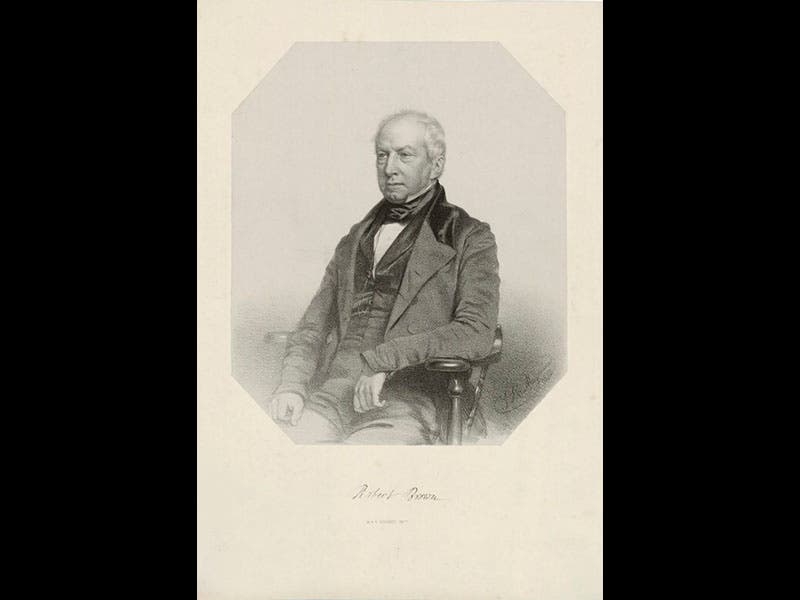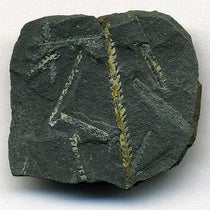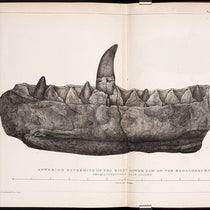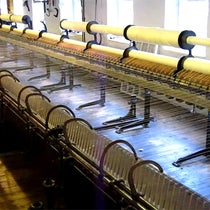Scientist of the Day - Robert Brown
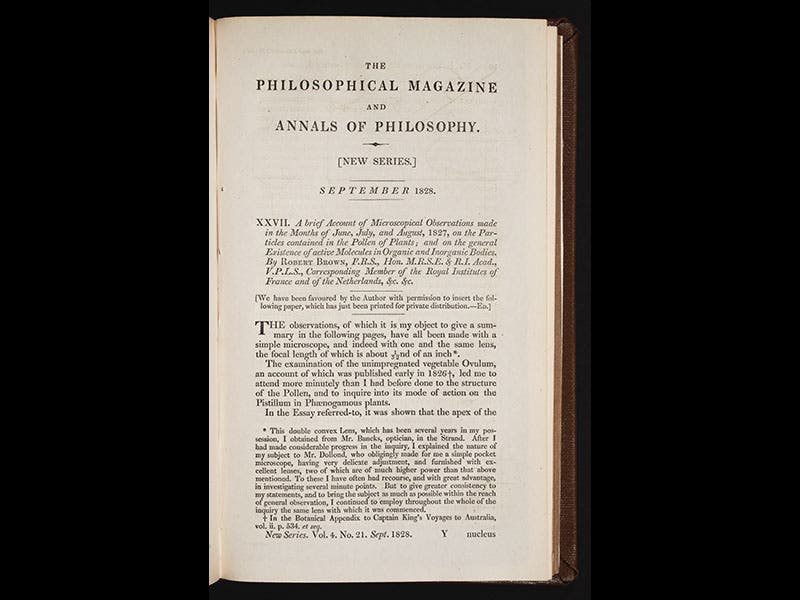
Linda Hall Library
Robert Brown, an English botanist, was born Dec. 21, 1773. Brown was the naturalist on the Flinders voyage to Australia, 1801-05, and he brought back a large number of new Australian plants. He got to know Sir Joseph Banks, who had been on Captain Cook’s voyage to Australia, 1769-71, and had returned with quite an Australian herbarium of his own. Banks evidently took a liking to Brown, for Brown became the keeper of the Banks library and herbarium in 1810. When Banks died in 1820, Brown inherited the Banks collections, which went in 1827 to the British Museum, with Brown as Keeper of botanical specimens. That gave Brown one of the most prominent botanical posts in the British Isles. He was very good at his job, but he was also very slow, and many of the specimens given to the Museum by later voyagers lay undescribed.in the Museum's repository, awaiting their turn on the Brown docket. That is why, when Charles Darwin got back from the Beagle voyage in 1836, he dreaded meeting the great Mr. Brown, because he had no intention of turning his specimens over to someone who was going to just sit on them. When they first met, in 1837, Brown did indeed ask about the fate of Darwin’s plant collection, but Darwin distracted Brown with a gift of some fossilized wood (Darwin commented in a letter: “I think my silicified wood has unflintified Mr Brown’s heart”), and successfully kept his plants out of the British Museum.
Brown is perhaps best known for a contribution to physics. In 1827, he was viewing some pollen grains in water with a simple microscope, and he noticed that the pollen grains exhibited tiny irregular movements. This "Brownian motion", as it came to be called, would become quite significant when it was realized that it is caused by molecular motion, and is indeed a proof of the existence of molecules. This was shown by Albert Einstein in one of his "other" papers of 1905 (other than special relativity, that is). Brown's article describing the phenomenon appeared in The Philosophical Magazine in 1828, which we have in our serials collection, and which we displayed in our 2009 exhibition on simple microscopes, Singular Beauty.
We display two portraits of Brown; the first, an engraving of 1837 by Charles Fox, and the second, a lithograph of 1850, executed by T. H. Maguire. In between, we sandwich the first page of Brown’s 1828 paper on Brownian motion.
Dr. William B. Ashworth, Jr., Consultant for the History of Science, Linda Hall Library and Associate Professor, Department of History, University of Missouri-Kansas City. Comments or corrections are welcome; please direct to ashworthw@umkc.edu.



